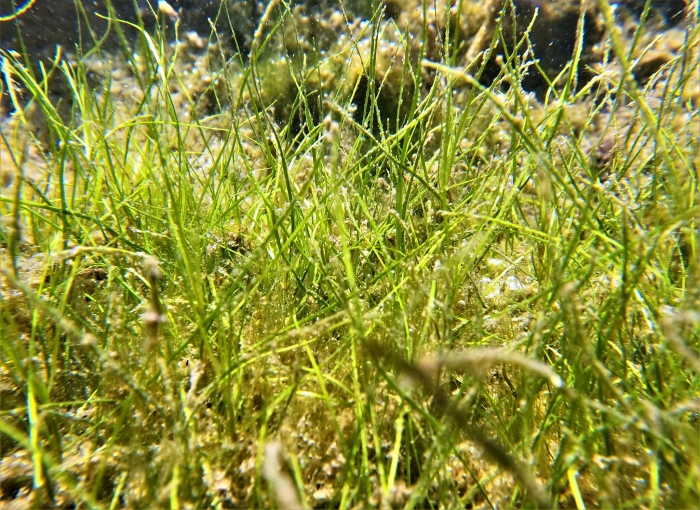Beaked Tasselweed
(Ruppia maritima)
Beaked Tasselweed (Ruppia maritima)
/
/

© Alberto Alcalá
CC BY 4.0
Image By:
© Alberto Alcalá
Recorded By:
Copyright:
CC BY 4.0
Copyright Notice:
Photo by: © Alberto Alcalá | License Type: CC BY 4.0 | License URL: http://creativecommons.org/licenses/by/4.0/ | Uploader: alboertoalcala | Publisher: iNaturalist |
























Estimated Native Range
Summary
Ruppia maritima, commonly known as Beaked Tasselweed, is a perennial aquatic plant that thrives in saline and brackish waters, including coastal lagoons, estuaries, and salt marshes. It is found worldwide, adapting to a range of coastal ecosystems. Beaked Tasselweed grows from a rhizome and reaches lengths that vary greatly depending on environmental conditions. Its narrow, thread-like leaves are a notable feature, and it produces a slender inflorescence bearing two tiny, inconspicuous flowers that are adapted for underwater pollination. The plant is capable of self-pollination and releases pollen that floats to other plants for cross-pollination.
Beaked Tasselweed is valued for its ability to tolerate high salinity levels, making it useful for restoration projects in coastal areas where few plants can survive. It plays a crucial role in stabilizing sediments and providing habitat for aquatic organisms. In cultivation, it requires an aquatic environment with brackish or saline water and can be grown in water gardens or for habitat restoration. However, it is potentially invasive in some regions, so it is essential to consult local regulations before planting it outside of its native range.CC BY-SA 4.0
Beaked Tasselweed is valued for its ability to tolerate high salinity levels, making it useful for restoration projects in coastal areas where few plants can survive. It plays a crucial role in stabilizing sediments and providing habitat for aquatic organisms. In cultivation, it requires an aquatic environment with brackish or saline water and can be grown in water gardens or for habitat restoration. However, it is potentially invasive in some regions, so it is essential to consult local regulations before planting it outside of its native range.CC BY-SA 4.0
Plant Description
- Plant Type: Herb
- Height: 0.8-1 feet
- Width: 4-9.75 feet
- Growth Rate: Rapid
- Flower Color: Green
- Flowering Season: Spring
- Leaf Retention: Deciduous
Growth Requirements
- Sun: Full Sun, Part Shade
- Water: High
- Drainage: Standing
Common Uses
Erosion Control, Low Maintenance, Water Garden
Natural Habitat
Thrives in saline and brackish waters, including coastal lagoons, estuaries, and salt marshes worldwide
Other Names
Common Names: Ditchgrass, Beaked Tasselweed, Sea Tassel, Sea-Grass
Scientific Names: , Ruppia maritima, Buccaferrea maritima, Ruppia andina, Ruppia brachypus, Ruppia brachypus subsp. bahusiensis, Ruppia brevipes, Ruppia brevipes, Ruppia cirrhosa subsp. longipes, Ruppia curvicarpa
GBIF Accepted Name: